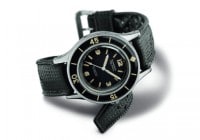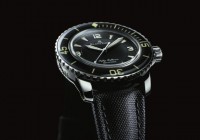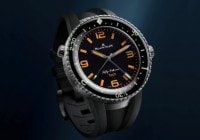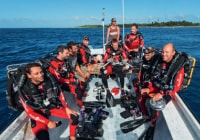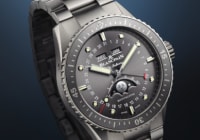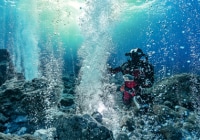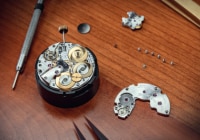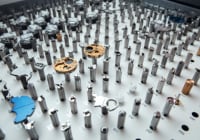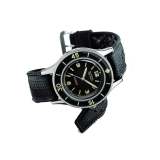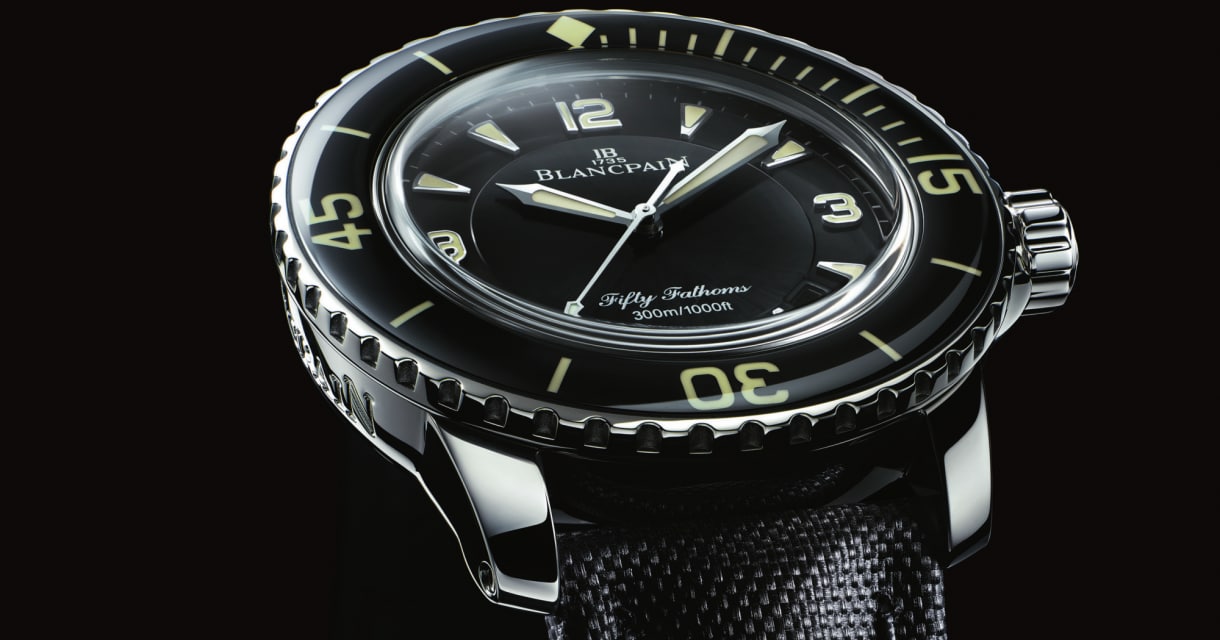
Search in Issues
Chapters
List of parts
Chapter 1
What defines A TRUE DIVING WATCH?
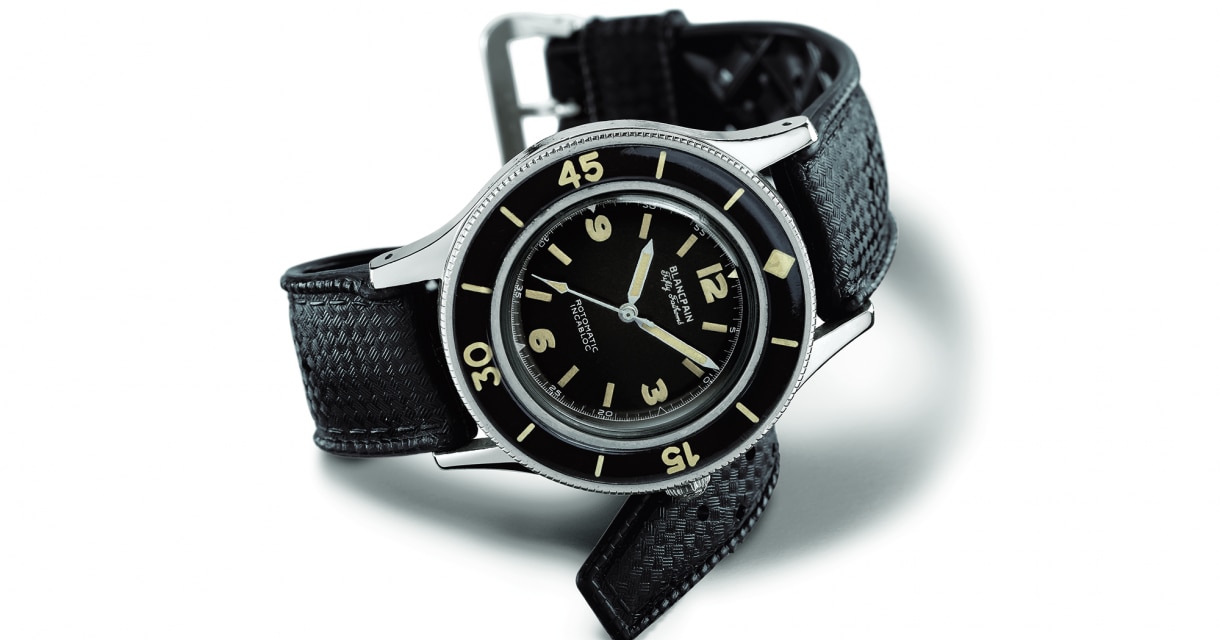
In 1953, when the French Navy was searching for a diving watch for its newly formed Combat Diving Corps, they discovered that the watch industry had little understanding of the needs of divers. Indeed, their initial tests of watches found on the market ended disastrously: the tested watches leaked, were small, and difficult to read underwater. Thereafter, the French team contacted Blancpain, whose then CEO Jean-Jacques Fiechter was a passionate diver who had already developed the first Fifty Fathoms drawing upon his own diving experiences. The examples given to the French by Blancpain passed all of the navy’s tests. The Fifty Fathoms became the French Navy’s diving watch.
So why did the navy divers choose the Fifty Fathoms? In short, because the design of the Fifty Fathoms reflected a profound understanding of what a diving watch had to be.
Of course, Blancpain knew that the first necessary attribute was superior water resistance. Two Blancpain inventions addressed this issue. One was a patented crown seal system to maintain water resistance if the crown were accidentally pulled out while underwater. The second design element aimed at improving existing screw-on case-back technology. The problem with previous systems was the “O” ring, which seals the back, could become twisted and misaligned when the back was screwed in place. Blancpain created a system to eliminate this risk with a design that placed the “O” ring in a channel with an additional metallic disk to protect it. This, too, was granted a patent.
Although water resistance was vital, Blancpain understood that there were additional requirements before a timing instrument could fulfill the demands of the underwater world and be considered as a true diving watch. In diving, measuring the time spent underwater is one of the most important factors on a diver’s mind. Keep in mind that in the 1950s, chronographs were not an option, as effective seals for the pushers had not yet been developed. Blancpain’s system was ingenious, employing a rotating bezel. At the start of the dive, the bezel could be turned to place its zero index opposite the minute hand; thereafter the diver could directly read time underwater with the minute hand using the time markings on the bezel. A second related and critical safety feature was incorporated to eliminate the risk of accidental bezel rotation. To address this, Blancpain developed a patented locking mechanism to prevent inadvertent rotation. Seeing legibility as a vital feature for divers using the watch in murky water, Blancpain endowed the original Fifty Fathoms with a large size, a white-against-black color scheme, and luminous hands and indexes. Automatic winding for the movement was another vital element in the design, chosen to minimize wear on the crown and its seals, which would occur with manual winding. Finally, because magnets were part of the diving environment as Fiechter knew it, the Fifty Fathoms was equipped with a soft inner iron case to protect the movement from residual magnetism.
It was the insightful combination of all of these elements that not only made the Fifty Fathoms the standard for the French Navy and other navies around the world (including the German and US Navies), but also the enduring standard and formula for the entire watch industry since 1953.
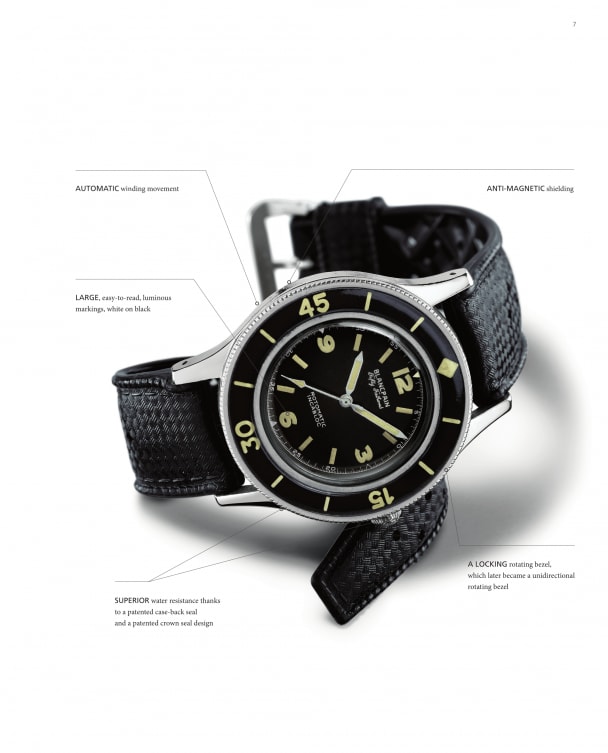
Other issues
Don't miss the latest issue
Sign Up for New Releases

